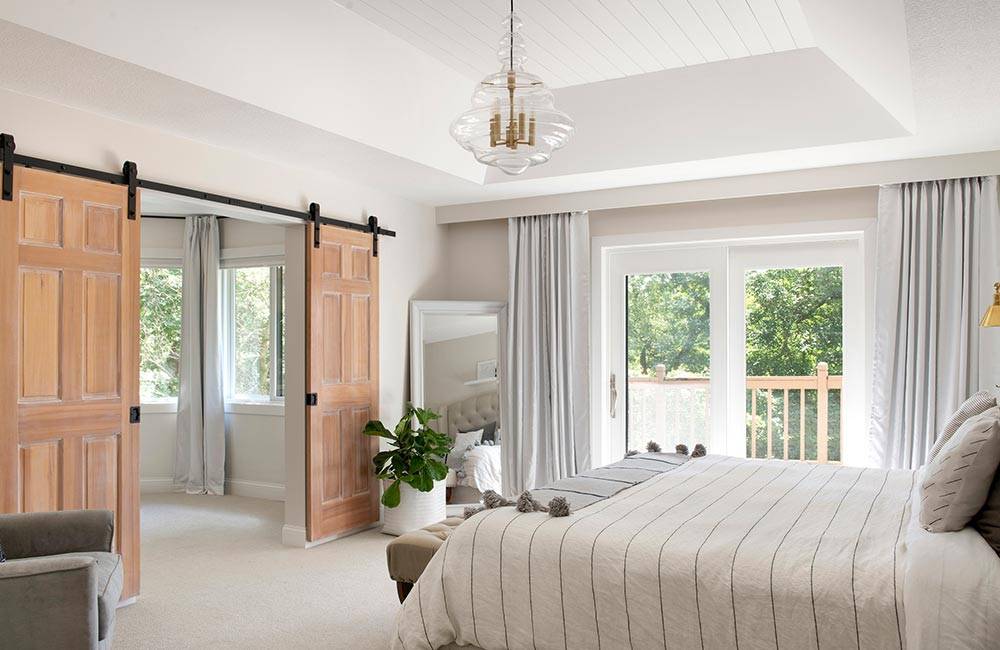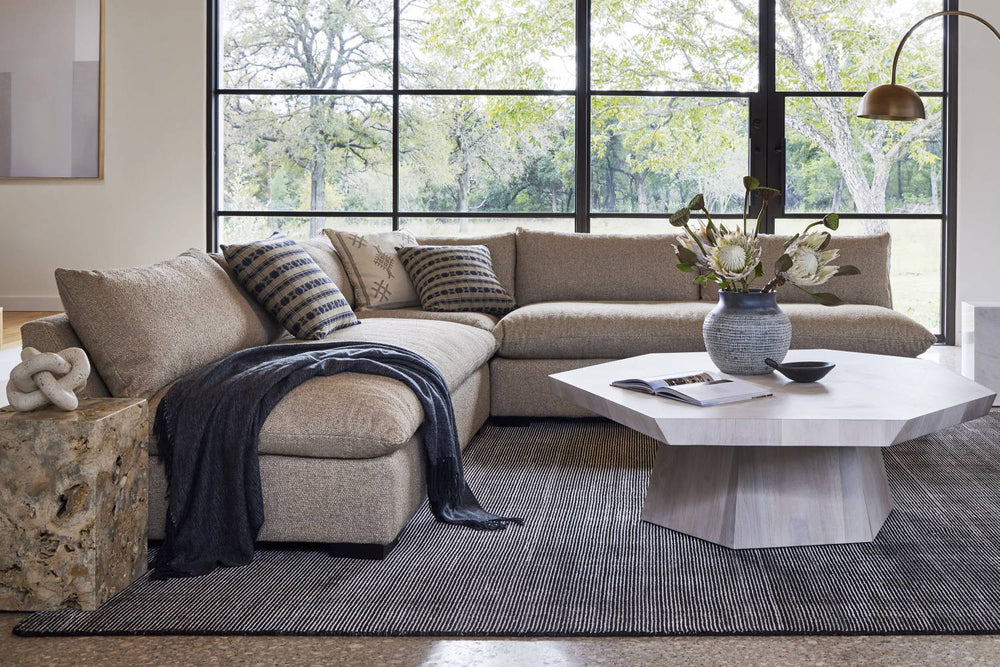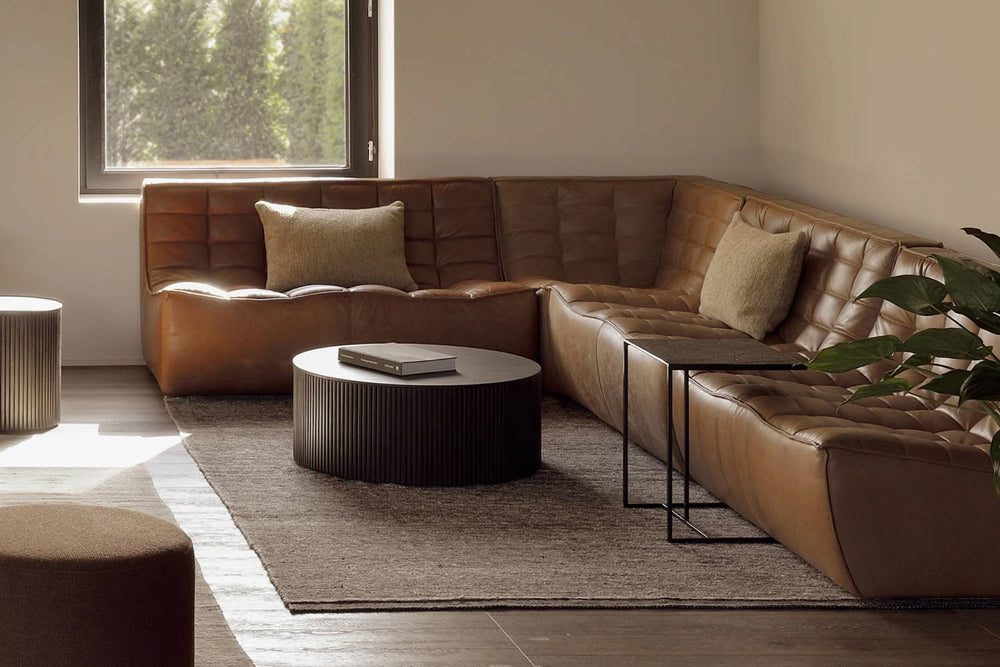Decorating a small living room can be a delightful challenge that brings out the best in creativity and resourcefulness. Limited space doesn't mean limited style; with the right approach, you can transform even the coziest of living rooms into a stunning and functional sanctuary. This guide will walk you through practical tips, clever design hacks, and inspiring ideas to make the most of your small living space. Whether you're looking to maximize storage, create an illusion of more space, or simply infuse your personality into your home, this guide is your ultimate resource for decorating a small living room with flair and efficiency.
Select the Right Furniture
Choosing the right furniture for a small living room involves balancing functionality, style, and space efficiency. Here are some key considerations to keep in mind:
- Size and Scale: Opt for furniture that fits the scale of your room. Overly large pieces can overwhelm a small space, making it feel cramped. Look for compact, low-profile lounge chairs or coffee tables that won't dominate the room.
- Multifunctional Pieces: Furniture that serves more than one purpose can be a game-changer in a small living room. Consider sofa beds, ottomans with storage, or coffee tables that can double as desks or dining areas. These pieces maximize utility without taking up additional space.
- Storage Solutions: Choose furniture with built-in storage to help keep your living room organized and clutter-free. Look for sofas with hidden compartments, wall-mounted shelves, and media consoles with drawers or cabinets.
- Light and Airy Designs: Furniture with exposed legs or transparent materials, like glass or acrylic, can create a sense of openness. This can help make the room feel larger and less crowded.
- Flexible Arrangements: Modular furniture allows you to rearrange pieces easily to suit different occasions and needs. Sectional sofas or modular shelving units can be particularly useful in small living rooms.
- Vertical Space Utilization: Make use of your room’s height with tall bookcases, wall-mounted storage, and vertical art arrangements. This draws the eye upward, giving the illusion of a larger space.
- Color and Texture: Lighter colors and minimalist designs can make furniture seem less intrusive. However, don't shy away from adding personality with a few bold pieces or textures that complement the overall aesthetic.
By carefully selecting the right furniture, you can create a small living room that is both functional and stylish, making the most of every inch of space.
Maximizing Space with Smart Layouts
Maximizing space in a small living room requires strategic planning and clever layouts. Here are some tips to help you make the most of your limited space:
- Open Floor Plan: If possible, adopt an open floor plan that integrates your living room with adjoining spaces like the kitchen or dining area. This creates a sense of flow and openness, making the area feel larger.
- Zoning: Define different areas within the living room for various functions. Use rugs, furniture arrangements, or lighting to create zones for seating, working, or dining. This helps in organizing the space efficiently.
- Furniture Placement: Place larger furniture pieces like sofas against the walls to free up central floor space. Avoid blocking pathways and ensure there’s a clear flow throughout the room.
- Corner Utilization: Corners are often underused but can be valuable for placing chairs, small tables, or corner shelves. This makes use of every inch of the room.
- Floating Furniture: Consider floating some furniture pieces, such as a floating desk or wall-mounted shelves, to keep the floor space clear. This not only provides functionality but also maintains an airy feel.
- Symmetry and Balance: Symmetrical arrangements can create a harmonious and organized look, making a small room feel more spacious. Balance large pieces with smaller, complementary items to avoid a cluttered appearance.
- Dual-Function Areas: Combine functions in one area, like a media console that doubles as a workspace, or a sofa that can be transformed into a guest bed. This maximizes utility without overcrowding the room.
- Sliding Doors and Folding Furniture: Sliding doors for entryways or closets save space that would otherwise be needed for swinging doors. Similarly, fold-out furniture like wall-mounted desks or foldable tables can be stowed away when not in use.
- Reflective Surfaces: Mirrors and glass can reflect light and create the illusion of more space. Position mirrors strategically to reflect natural light and open up the room visually.
By implementing these smart layout strategies, you can maximize the space in your small living room, making it both functional and inviting.
Creative Decor Ideas
Decorating a small living room creatively involves thoughtful use of color palettes, patterns, and plants to enhance the space without overwhelming it. Here’s how to effectively incorporate these elements:
Color Palette:
- Light and Neutral Tones: Use light colors like whites, creams, pastels, and soft grays as the base palette to make the room feel more spacious and airy. Neutral tones can also serve as a calming backdrop that allows other decor elements to stand out.
- Pops of Color: Add interest and personality with pops of vibrant color through accessories such as cushions, throws, or artwork. Bold colors like teal, mustard, or coral can create focal points without overwhelming the space.
- Monochromatic Scheme: A monochromatic color scheme, which uses varying shades of a single color, can create a cohesive and expansive look. This approach avoids the visual clutter that can come from too many contrasting colors.
- Accent Walls: Painting one wall in a bold color or using wallpaper can add depth and interest without making the room feel closed in. Choose a wall that naturally draws attention, such as the one behind the sofa or around a fireplace.
Patterns:
- Subtle Patterns: Incorporate subtle patterns like thin stripes, small geometrics, or tone-on-tone designs to add texture without dominating the space. These can be used in rugs, upholstery, or wallpaper.
- Accent Patterns: Use bold patterns sparingly to avoid a cluttered look. An accent chair with a vibrant print, a patterned throw pillow, or a feature wall with patterned wallpaper can add visual interest.
- Vertical Stripes: Patterns with vertical lines can make the ceiling appear higher and the room larger. Consider vertical striped wallpaper, curtains, or even a tall, thin bookshelf to draw the eye upward.
- Mix and Match: Mixing patterns can work in a small space if done thoughtfully. Combine small-scale patterns with larger ones, and keep them within the same color family to maintain harmony.
Plants:
- Vertical Gardens: Use vertical space for plants with hanging planters, wall-mounted shelves, or vertical garden structures. This adds greenery without taking up floor space.
- Small Potted Plants: Place small potted plants on shelves, window sills, or coffee tables to bring in nature and freshness. Succulents, ferns, and small palms are good options.
- Tall Plants: A tall, slender plant like a fiddle leaf fig or a snake plant can draw the eye upward and make the room feel taller. Position it in a corner to add height and interest.
- Plant Groupings: Group plants of varying heights and types together to create a mini indoor garden. This adds depth and texture without overcrowding the room.
By thoughtfully integrating color palettes, patterns, and plants, you can create a vibrant and harmonious small living room that feels larger, more dynamic, and full of life.
Practical Tips for Small Spaces
When dealing with small living spaces, maximizing every inch with hidden storage and flexible furniture arrangements is essential for both functionality and aesthetics. Here are some practical tips to help you achieve this:
Hidden Storage
- Built-in Shelves and Cabinets: Utilize built-in shelves and cabinets to keep your belongings organized and out of sight. Custom-built units can be designed to fit awkward spaces and blend seamlessly with the room’s decor.
- Storage Ottomans and Benches: Choose ottomans and benches that double as storage containers. These pieces can hold blankets, magazines, or other items while providing additional seating or serving as a coffee table.
- Under-Furniture Storage: Make use of the space under your bed, sofa, or chairs for storage. Under-bed drawers or boxes are perfect for storing seasonal clothing, linens, or shoes. Some sofas come with built-in storage compartments that are ideal for keeping extra pillows and throws.
- Hidden Compartments: Look for furniture with hidden compartments, such as coffee tables with lift-up tops or side tables with concealed storage. These pieces offer discreet places to stash items like remote controls, books, or games.
- Wall-Mounted Units: Wall-mounted shelves, cabinets, and desks free up floor space and provide ample storage. Use them to display decorative items, store books, or set up a compact home office.
- Mirrored Furniture: Furniture with mirrored surfaces can serve a dual purpose. Besides providing storage, mirrors can make the room appear larger and brighter by reflecting light.
Flexible Furniture Arrangements
- Modular Furniture: Invest in modular furniture that can be rearranged easily to suit different needs. Sectional sofas, stackable chairs, and modular shelving units can be reconfigured to accommodate more guests or create different zones within the room.
- Folding Furniture: Folding tables, chairs, and desks can be tucked away when not in use, freeing up valuable space. Look for pieces that are lightweight and easy to move.
- Nesting Tables: Nesting tables can be stacked together when not in use and separated when you need extra surface area. This flexibility makes them ideal for entertaining or everyday use.
- Transformable Furniture: Look for furniture that can change its form to serve multiple purposes. For example, a sofa that converts into a bed, or a coffee table that can be raised to dining height, offers versatility in a small space.
By incorporating hidden storage and opting for flexible furniture arrangements, you can create a small living space that is both practical and stylish. These strategies allow you to keep your space organized and adaptable to your needs, making the most of every square inch.
Decorating a small living room presents a unique opportunity to embrace creativity and innovation, turning constraints into features. By thoughtfully selecting furniture, optimizing storage, and employing design tricks to enhance the sense of space, you can create a living room that is both stylish and functional. Remember, the key is to prioritize your needs, reflect your personal style, and stay flexible with your ideas. With the tips and inspiration from this guide, you're well-equipped to transform your small living room into a cozy, inviting, and beautiful space that feels just right.








